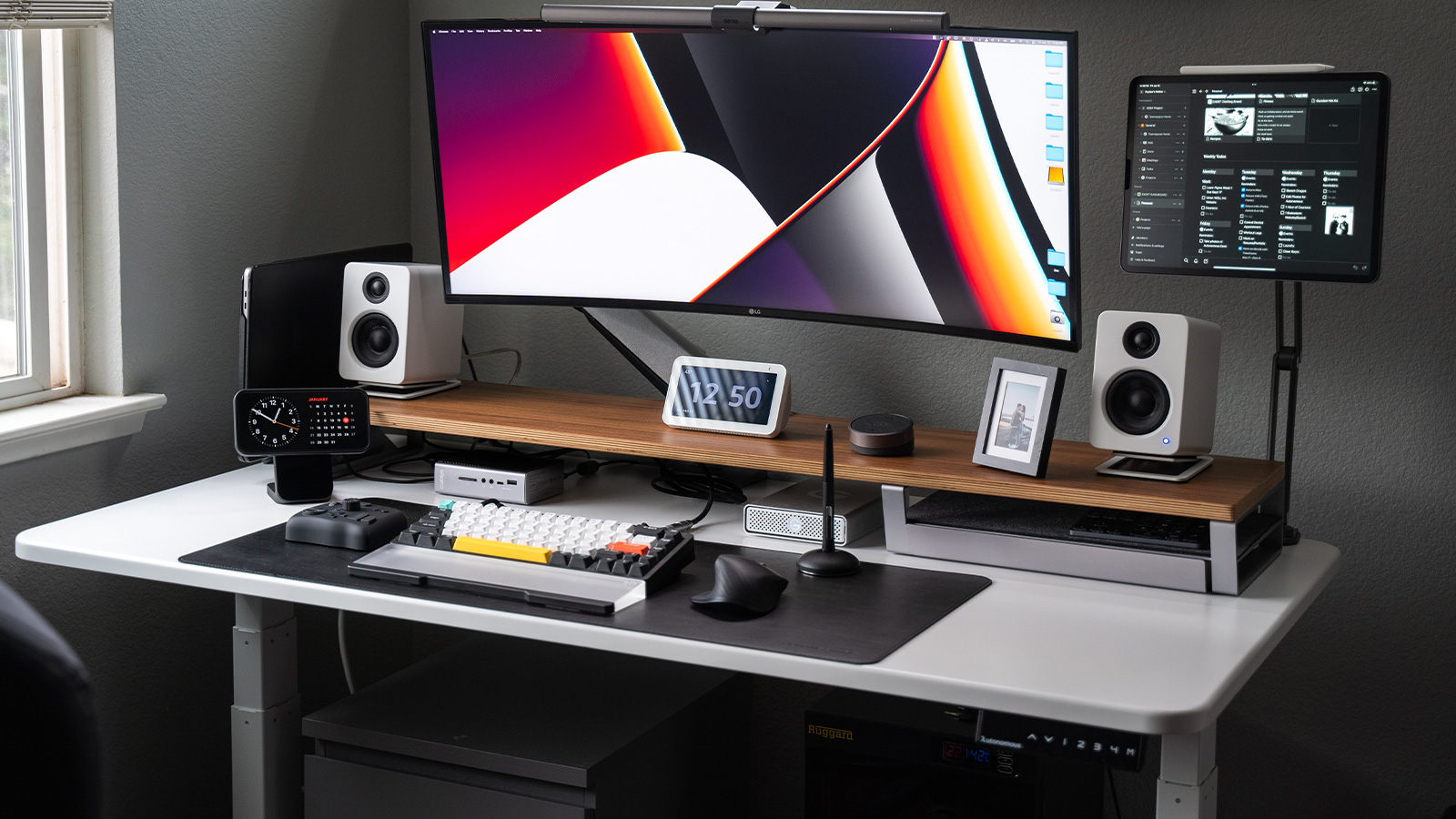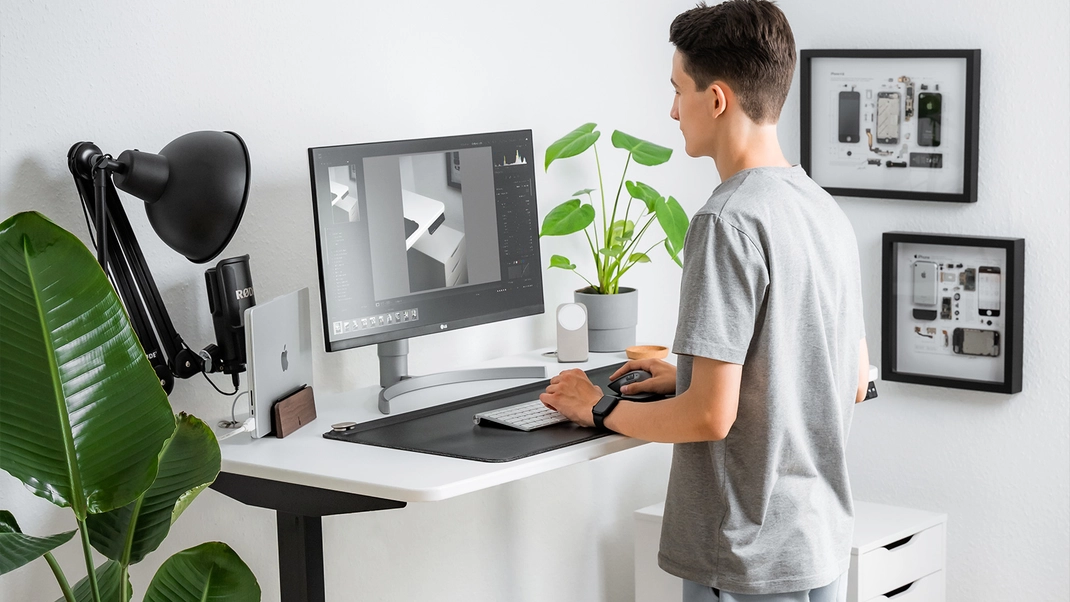
Table of Contents
When working on a computer system, most users complain of backaches, stiff neck and shoulders, and other concerns related to the spine. Sitting for a long duration at a work desk, using a computer and an external or built-in mouse, has its own troubles. Initial symptoms from bad postures mostly start with pains, aches, and cramps/sprains where you find it difficult to work. Do not ignore these symptoms.
As much as these systems help us get work done, using them incorrectly affects your health and well-being. One needs to be careful about the duration of sitting in one place and the kind of posture one maintains. Users are known to have symptoms like carpal tunnel syndrome, a tennis elbow, or even Repetitive Strain Injury (RSI) and more. National Health Services, UK, has some more details on tips to prevent these.
While you may not have the freedom to change the computer system or a workspace allocated to you, making minor adjustments to your body posture can enable a higher comfort minus these aches and sprains. You can prevent all of these by using simple techniques and managing your posture while at work.
One of the critical ones is to manage proper keyboard and mouse posture when in use.
Let’s explore more.
Top 5 Tips for Positioning Your Keyboard and Mouse Correctly
Focus on the main purpose that is to reduce the avoidable strain of your fingers, wrists, arms, shoulders, and back. It is necessary to keep them in as natural and neutral position as you can.
Proper Keyboard Position
| Parameter | Ideal Setup |
|---|---|
| Height | At or slightly below elbow level |
| Angle | Flat or slightly tilted away |
| Distance | Directly in front, within easy reach |
| Wrist Position | Neutral (not bent up, down, or sideways) |
Proper Mouse Position
| Parameter | Ideal Setup |
|---|---|
| Height | Same level as the keyboard |
| Proximity | Close to the keyboard, elbow close to the body |
| Grip | Relaxed grip |
| Movement | Move with the arm, not just the wrist |
1. Position/Location
With the ergonomic keyboard position directly in front of you, ensure that the mouse is by your side too. Some folks prefer to use a trackpad on laptops; it may not be the best as they are not designed for prolonged use. For users of an external mouse, ensure it is as close to the keyboard as possible. Why? Your arms don't have to be stretched to access it, straining your shoulders.
2. Height
Having the mouse and keyboard at elbow height ensures minimal strain to your upper arms, elbows, and shoulders. Ensure that your elbows are not dropping below the levels of the keyboard and mouse with the correct ergonomic keyboarding techniques. Consider altering your table height or your chair height for any modifications.
The keyboard and mouse must be at the same level to ensure that the arms don't have to be lifted or lowered frequently as you alternate between the two. Every repetitive mall movement is what causes RSI.
3. Placement to the front of the desk
Ensure that you have placed the keyboard and mouse closer to the front of the desk (towards you). You can avoid stretching with this positioning, and you can relax your arms. Do remember that you will need space to rest on the desk as you operate the keyboard.
While most folks prefer to place the mouse next to the keyboard, this causes your arms to stretch to grab it. It is advisable to place the mouse in front of the keyboard. It may seem odd initially, but this is the best place, as the arms, shoulder, and wrist are directly in one line. Some folks advise using compact keyboards (those with a side number keypad) unless your role requires so. With a compact/smaller keyboard length, your mouse is closer to you. Those who require a keypad on the side, as their roles require so, can opt for a separate wireless keypad that has digits.
4. Give rest to your hands
When not using a keyboard/mouse, rest to your arms, elbows, and shoulders by resting them or dropping them from shoulder level. NHS, UK prescribes various exercises for resting your arms and shoulders.
5. Avoid keyboard trays
Using a keyboard tray should be your last option as it defies most principles of ergonomics. If unavoidable due to design, space, or user preferences, you need to ensure it has enough width to accommodate both the keyboard and the mouse. This avoids different levels for mouse and keyboard, as discussed earlier.
Some gamers prefer a keyboard tray for gaming, which is a different type of work altogether.

Importance of Correct Computer Accessories
If you use a computer keyboard for a long duration during the day, it is best to consider an ergonomic keyboard.
- Ergonomic Keyboard
An ergonomic keyboard setup is designed with ergonomic guidelines to reduce and minimize your muscles fatigue and strain from fingers, wrists, elbows, shoulders, back, and more.
These keyboards are available in many designs ranging from a split design for people using both hands for typewriting, wrist cushioning, tweaked keyboard layout, and angled frames. Purpose? They are designed specifically to reduce the pressure on your upper arms, elbows, wrists, and back.
For people who work long hours, nothing can be better than making this investment for your health! A must-have, you may take a little while to get used to a new ergonomic keyboard, but then isn't that natural of anything new? Cons? They are slightly expensive than the normal keyboards.
- An Ergonomic Mouse
Designed to fit the human hands and to allow you a natural position for your hands, palms, and elbows, an ergonomic mouse is your best option. These could be shaped and designed in various ways to include those for a left-handed person, for those who prefer an upright/standing position mouse, or like a joystick, and more. Some are even designed to mirror the hand in a weightless environment.
An ergonomic mouse is designed to reduce pains and aches from the wrist, hand, and arms caused if you do not follow proper mouse posture.
The ergonomic mouse benefits are many, and you simply cannot afford to ignore this.
- Others
If you are a gamer, explore the various gamer desk accessories for your well-being.

Summary
To wrap up, with small and careful tips put into practice, you can easily maintain good health and well-being.
Stay connected with us!
Subscribe to our weekly updates to stay in the loop about our latest innovations and community news!
Interested in a Link Placement?
Spread the word
.svg)
.svg)



/https://storage.googleapis.com/s3-autonomous-upgrade-3/production/ecm/230914/bulk-order-sep-2023-720x1200-CTA-min.jpg)

/https://storage.googleapis.com/s3-autonomous-upgrade-3/static/upload/images/new_post_author/natasha-palance-11.jpg)